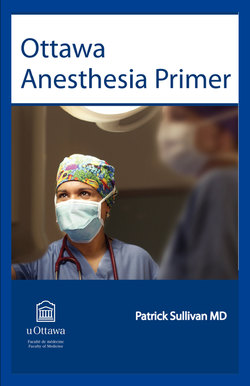Читать книгу Ottawa Anesthesia Primer - Patrick Sullivan - Страница 33
На сайте Литреса книга снята с продажи.
Physical Examination:
ОглавлениеThe physical exam should focus on evaluation of the airway as well as the cardiovascular and respiratory systems. Specific attention should be directed to other systems based on comorbidities identified in the preoperative evaluation.
General Inspection:
A general assessment of the patient’s physical and mental status should be performed, and note should be taken of the patient’s vital signs (heart rate, respiratory rate, blood pressure, and oxygen saturation) and biometric measurements (height and weight for calculation of BMI). It is important to check whether the patient is alert, calm, and cooperative, or unusually anxious about the scheduled procedure. Also, does the patient appear young and fit, or elderly, incoherent, emaciated, and bed-ridden? Such obvious differences will dictate the extent and intensity of the examination and the time required to address the patient’s concerns and provide reassurance. The patient’s mental status may also determine the type and amount of premedication required (if any) and may influence the type of anesthetic technique used (general vs regional).
Airway Examination:
Examination of the upper airway should be performed on all patients regardless of their planned anesthetic, as this assessment is used as an indicator of potential difficulty with bag-mask ventilation as well as laryngoscopy and tracheal intubation. Identification of abnormalities in the airway exam will assist in the formulation of a rational plan for airway management. Difficulty in securing the airway is associated with significant patient harm that may be avoided with careful assessment and planning. A detailed discussion on the preoperative airway examination can be found in Chapter 6: Intubation and Anatomy of the Airway.
Cardiovascular Examination:
Assess the patient’s heart rate, rhythm, and blood pressure. Auscultate and identify the first and second heart sounds, and listen for the presence of heart murmurs or a third or fourth heart sound. Identify the location of the apical pulse, and note whether it is abnormally displaced. If indicated (i.e., history of CHF), assess the level of the jugular venous pressure (JVP) and look for the presence of peripheral edema.
Respiratory Examination:
Assess the respiratory rate and work of breathing (i.e., easy and relaxed vs using accessory muscles), and look for the presence or absence of cyanosis or clubbing. Changes in the shape of the thoracic cage may be observed in patients with chronic respiratory disease. The COPD patient with obstructive disease (often referred to as a “blue-bloater”) may have a “barrel”shaped chest that is quite different from a patient with emphysema (commonly referred to as a “pink-puffer”) or the restrictive lung defect associated with kyphoscoliosis. Auscultate the patient’s chest during quiet and forced respiration, listening for bilateral air entry and noting the presence of crackles or wheezes.
Neurological Examination:
A basic neurological assessment should be performed and documented in patients with a history of preexisting motor or sensory weakness as well as in patients about to have a regional nerve block. On general inspection, assess for symmetry, look for the presence of muscular tone, and note any abnormal movements or posturing. Assess sensation in the upper and lower extremities in response to light touch and pain (or temperature). Record any gross motor deficits present prior to the proposed procedure. If neuraxial anesthesia is planned, assess the patient’s back, specifically noting the alignment (examining for scoliosis, kyphosis, or lordosis) and the ability to palpate external landmarks, such as the spinous processes and the anterior superior iliac crests.
Anticipate the need for special invasive monitors, and assess the anatomy for arterial line insertion, central vein cannulation, intravenous access, and major regional anesthetic techniques.
